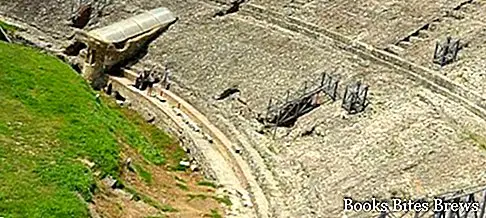What to see in Durres, itinerary including the main monuments and places of interest, including the Roman amphitheater, the Archaeological Museum and the Castle.
Tourist information
City of Albania, Durres is located on a promontory overlooking the homonymous bay of the Adriatic Sea, about 40 km from Tirana.
The city and its port, the most important in the country, located in an ideal position sheltered from the winds, represents the outlet to the sea of the capital Tirana.
On the lively promenade, formed by about 10 kilometers of beaches, you can breathe a pleasant seaside air, while the historic center still retains traces of the ancient city, which was founded with the name of Epidamno by the colonists of Corinth and Corcyra in 625 BC. C. ca., it was conquered by the Romans, and underwent many dominations, including the Byzantines, Normans, Venetians, Angevins and Turks, who dominated it until 1912, when the state of Albania was founded.
Italian troops landed in Durres in 1939 and occupied the Kingdom of Albania until 1943, when they were replaced by German troops.
In 1944 there was liberation from the Nazis and Albania became a socialist republic.
What see
The Roman amphitheater, built on the side of the hill, is one of the largest in the Balkan Peninsula, is located in the western part of the ancient city, near the Byzantine walls built between the end of the fifth and the beginning of the sixth century AD.
The building, whose construction should have taken place between 98 and 117 AD, under Trajan, was brought to light in the late sixties of the twentieth century for two thirds of its extension.
When its function as a place for shows ceased, the arena and galleries of the amphitheater became an area of necropolis and seat of Christian worship.
Between the sixth and tenth centuries, a small chapel was built, decorated with paintings and mosaics, and a second chapel, entirely frescoed with now illegible paintings, was built between the tenth and fourteenth centuries.
The Archaeological Museum is very interesting, the largest in the country, where artifacts found in the ancient site of Dyrrhachium are preserved, as well as a vast collection relating to the ancient Greek, Hellenistic and Roman periods.
Recommended readings- Tirana (Albania): what to see in the capital
- Saranda (Albania): what to see in the white city
- Durres (Albania): what to see
- Butrint (Albania): what to see in the archaeological park
- Albania: useful information
In the old town, a tower connected to a part of the walls is what remains of the Durres Castle, built around the fifth century AD. in the Byzantine era.
In the heart of the city there is also the Fatih Mosque, built with simple architecture at the beginning of the sixteenth century on the ruins of an ancient medieval Basilica, immediately after the Ottoman conquest of Durres.
On the hill, about 100 meters above sea level there is the Royal Villa of Durrës, the Royal Villa Durres, built by King Zog I, between 1927 and 1937.
The building, which has an articulated architecture, was in the past a representative palace for the communist regime.
Although it is not possible to visit it, due to its position it constitutes an excellent panoramic point over the city and the sea, visible on the three sides of the Villa.




